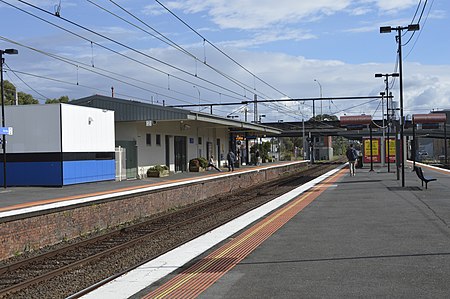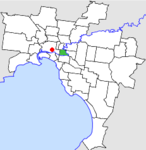Burnley railway station

Burnley railway station is the junction station for the Lilydale, Belgrave, Alamein and Glen Waverley lines in Victoria, Australia. It serves the inner eastern Melbourne suburb of Burnley, and it opened on 1 May 1880 as Burnley Street. It was renamed Burnley on 1 September 1882.Train stabling facilities are located at the eastern (Down) end of the station, adjacent to the Glen Waverley line, while an additional, rarely-used siding is located at the western (Up) end. In August 1943, as part of the Ashworth Improvement Plan, a flyover was constructed east of the station, to allow Glen Waverley line trains to cross over the Hawthorn-bound line.The Madden Grove level crossing, located nearby in the Down direction on the Glen Waverley line, was provided in 1963, replacing an earlier level crossing. In 1966, the signal box was rebuilt, the Burnley Street level crossing was grade-separated and the line towards Richmond expanded to quadruple track. The third track to Hawthorn was commissioned in 1972. The stabling facilities were provided in 1997, as part of the closure and replacement of Jolimont Yard.Burnley was upgraded to a Premium Station on 19 December 2008. On 30 November 2017, the signal box was abolished, with control transferred to Metrol.
Excerpt from the Wikipedia article Burnley railway station (License: CC BY-SA 3.0, Authors, Images).Burnley railway station
Madden Grove, Melbourne Richmond
Geographical coordinates (GPS) Address Nearby Places Show on map
Geographical coordinates (GPS)
| Latitude | Longitude |
|---|---|
| N -37.82743 ° | E 145.00657 ° |
Address
Platforms 3 & 4
Madden Grove
3121 Melbourne, Richmond
Victoria, Australia
Open on Google Maps





